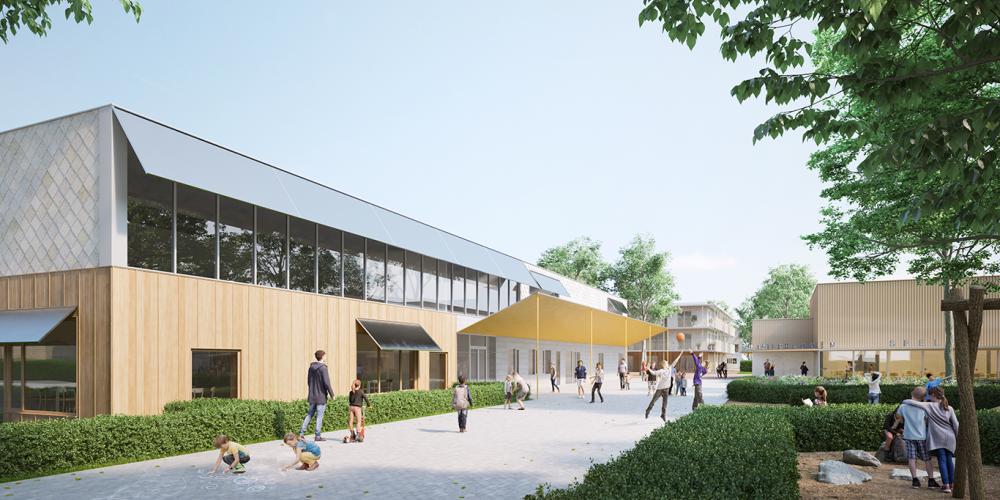
'Schools for the future' offers sustainable answer to education capacity issues
With the increasing population, the education sector is facing a shortage of school buildings. In recent years, a great deal has therefore been invested in new infrastructure. But are these the schools of and for the future? At the initiative of group Van Roey - one of the larger construction companies in our country - the research group VUB Architectural Engineering developed a practical guide for clients and designers who want to realise sustainable and circular school buildings.
Stijn Elsen, researcher and teaching assistant at VUB Architectural Engineering: "Within the idea of a sustainable, circular economy, a building should be designed with robust, reused or renewed components, in such a way that these components will continue to follow a cycle whenever refurbished. In this way, schools and their components remain useful, and raw materials are never lost."
The guide was realised in cooperation with the BBRI (Belgian Building Research Institute), VITO (Flemish Institution for Technological Research) and Antwerp University with the financial support of Circular Flanders, and brings together the knowledge of VUB's research group and the experience of Van Roey group. The practical guide offers solutions that can be applied to school buildings, taking into account preconditions such as construction speed and school-typical characteristics, including changes in the pedagogical project, use of materials and comfort.
In this way, the manual helps clients and designers on their way to sustainable and circular school buildings. The guide is a concrete implementation of the 16 circular design qualities already published by VUB Architectural Engineering in 2019.
Too few schools - too many schools
This practical guide to future-oriented and circular construction of schools was created in response to the increasing capacity problems in nursery and primary schools. But the guide thinks further. Solving the capacity problem now by building a lot can lead to an overcapacity later on.
Jona Michiels, innovation manager at construction company group Van Roey: "For example, the Municipal Education Service in Antwerp pointed out to us that the increase in young children will reach a peak around 2030. What should happen afterwards with all the school extensions is rarely discussed. Do the school buildings allow for downsizing or a change of function? And what about those schools that eventually become vacant? We are in any case convinced that we should not leave these questions unanswered."
Group Van Roey is already using the manual today, to explain sustainable and circular design principles to architects and other actors they work with for the realisation of school buildings.